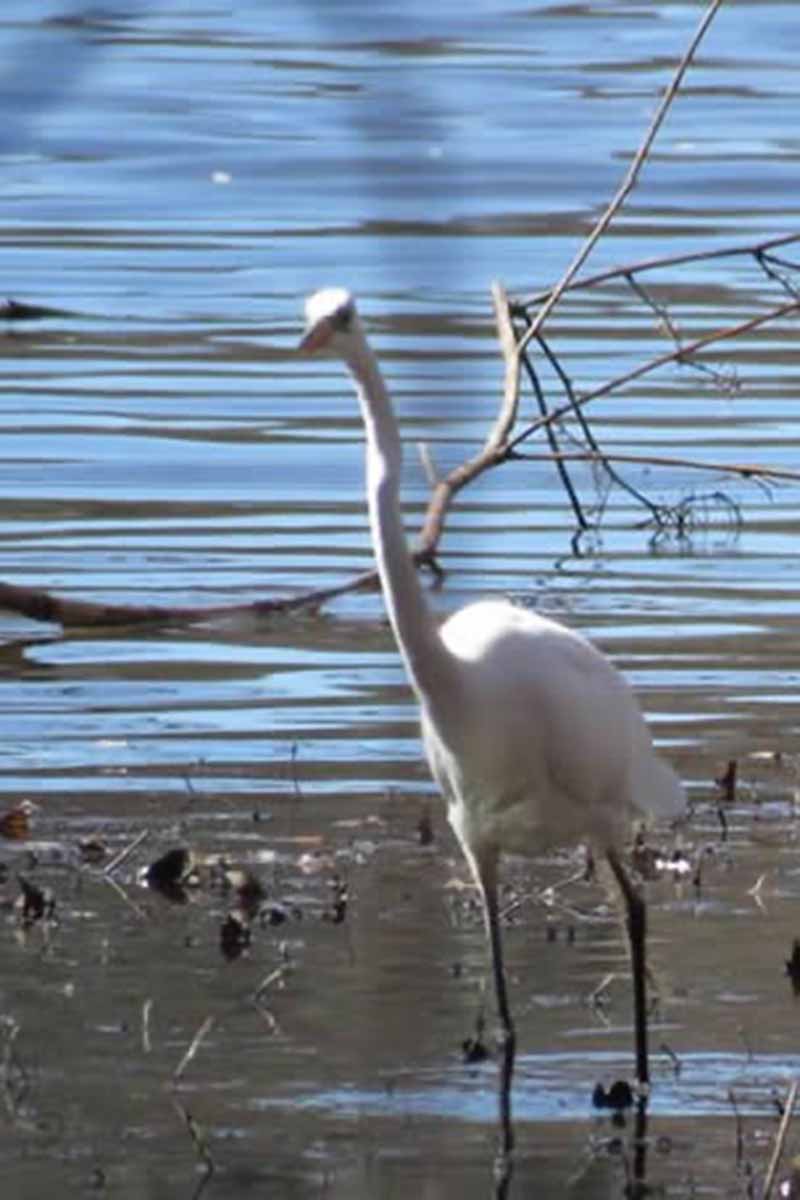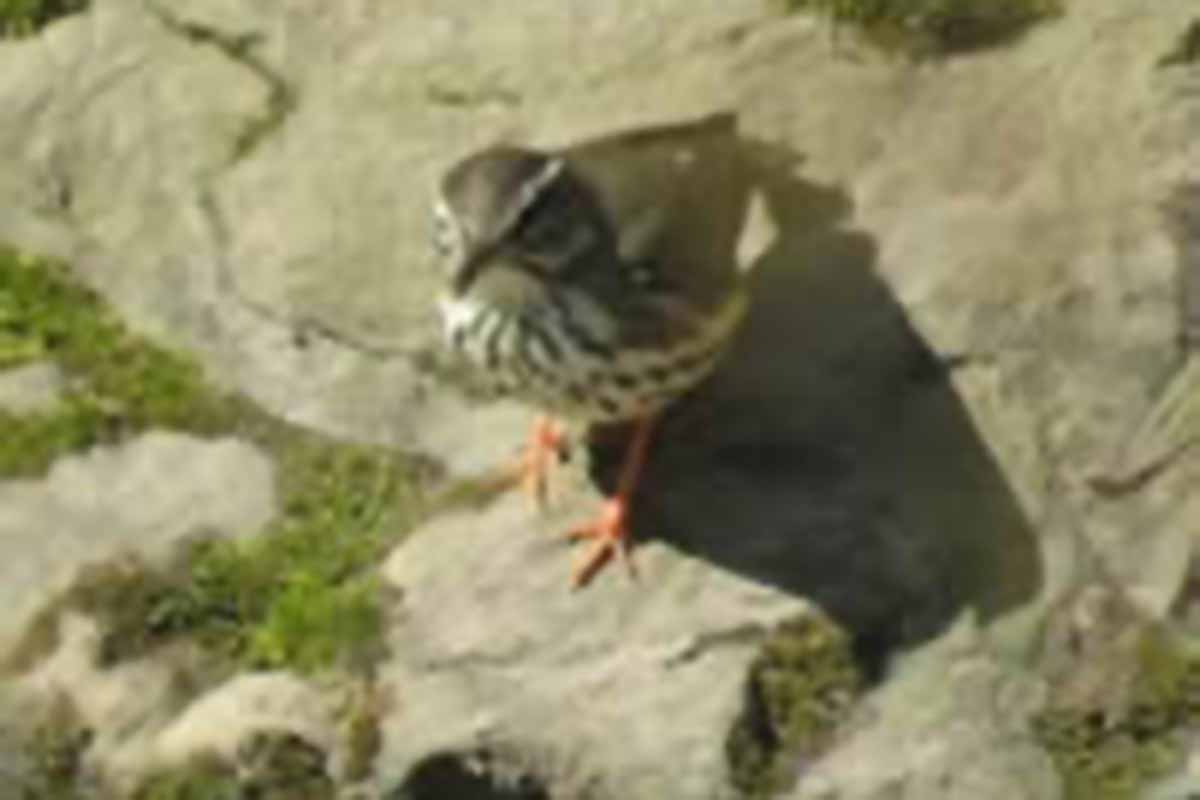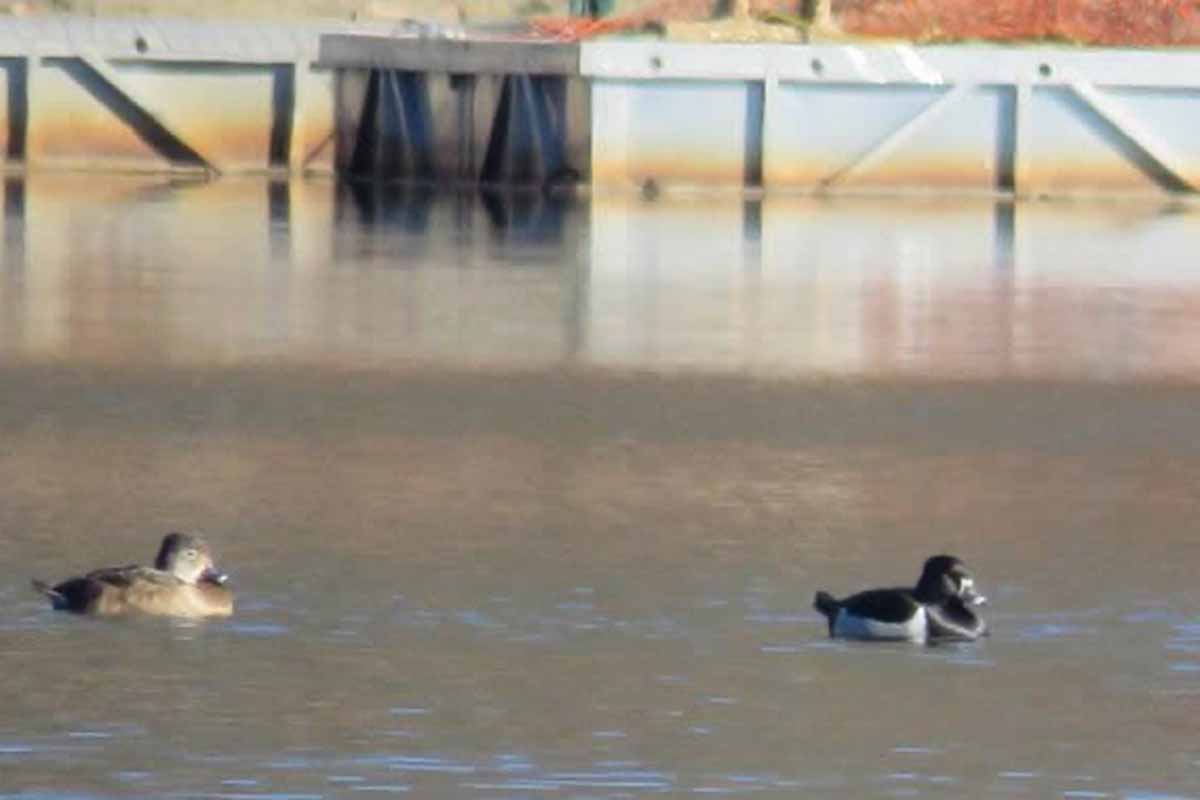March 25, 2017
Registrars: Kathleen Howley, Anne Lazarus
Passengers: 12
Weather: 40 to 50 degrees Fahrenheit, occasional rain, wind 5-10 mph
Bird Species: 69
Visited Marine Park, Floyd Bennett, Coney Island Pier, 35th St. Coney Island from 8:00 am to 4:00 pm, distance covered ~4 miles
Despite clouds, intermittent rain raw, chilly weather, we saw 70 species of bird, under the masterful leadership of Peter Dorosh. We began our walk at Marine Park where we were greeted by our first Eastern Phoebe. Kathy Toomey immediately spotted Wood Ducks, and she made sure we all saw the ducks. They were obscure, not easy to see. We then scanned the area for other water birds, and saw many duck species, including Greater Scaup, one Lesser Scaup, (Peter can tell Lesser and Greater apart under all conditions.) Green-winged Teals, Gadwall, American Black Ducks, Mallards Hooded Mergansers, spotted by Miriam Rakowski, Buffleheads and Northern Shoveler. Ryan Goldstein, Angie Coe and Richard Payne sighted a Wilson’s Snipe, which flew into the marsh grasses. Suddenly Peter called our attention to the Eurasian Wigeon, a year bird for almost all of us. We had our last looks at the American Tree Sparrow before it departs from our area. The Ospreys were back at the nest. We can thank Susan Axelrod for spotting the Killdeer when it landed in a sandy patch in the marsh grasses, and also for spotting several American Oystercatchers.
Our next stop was Marine Park. Our first exciting bird was a Red-shouldered Hawk. Peter identified the hawk and explained to us the salient characteristics. He took us to the best places to see raptors, and we saw five American Kestrels, Northern Harrier, Red-tailed Hawk and Osprey. Peter also found an Eastern Bluebird. We enjoyed observations of two singing Field Sparrows, Carolina Wren Song Sparrows and more. Our leader knew where the Horned Larks like to forage, and we were not disappointed. They were accompanied by two Killdeer. The cricket field attracted 13 more Killdeer. At the bay we were entertained by Horned Grebes, some almost in alternate plumage. Common Loon, Red-breasted Merganser, Bufflehead were among the water birds there. After lunch we took off to Coney Island Pier.
Almost immediately, we saw flocks of Long-tailed Ducks in alternate plumage. We saw a male Surf Scoter. To my surprise, an Iceland Gull appeared in my scope. It was in the water with other gulls. It then flew with the other gulls and put on a show. Other water birds included Common Loon, Northern Gannets, Bufflehead, Red-breasted Mergansers and Double-crested Cormorants.
Our final stop was 35th St at Coney Island to see the Red-necked Grebe. Peter quickly spotted the Red-necked Grebe, and drew our attention to it. We kept following it with our scopes and binoculars. Also, we saw a Laughing Gull, a sign of spring. We enjoyed fascinating observations of about 150 Northern Gannets. Our attention was then drawn to the jetty, a perfect place for Purple Sandpipers, and we were rewarded. We had great looks at three of them plus a bonus of three, close Red-throated Loons. It was time to go home after an exciting day of birding.
Species Lists
Birds
Brant
Canada Goose
Wood Duck
Northern Shoveler
Gadwall
Eurasian Wigeon
American Wigeon
Mallard
American Black Duck
Green-winged Teal
Greater Scaup
Lesser Scaup
Surf Scoter
Long-tailed Duck
Bufflehead
Hooded Merganser
Red-breasted Merganser
Pied-billed Grebe
Horned Grebe
Red-necked Grebe
Rock Pigeon
Mourning Dove
American Oystercatcher
Killdeer
Purple Sandpiper
Wilson’s Snipe
Laughing Gull
Ring-billed Gull
Herring Gull
Iceland Gull
Great Black-backed Gull
Red-throated Loon
Common Loon
Northern Gannet
Double-crested Cormorant
Great Blue Heron
Osprey
Northern Harrier
Red-shouldered Hawk
Red-tailed Hawk
Yellow-bellied Sapsucker
Red-bellied Woodpecker
Downy Woodpecker
Northern Flicker
American Kestrel
Eastern Phoebe
Blue Jay
American Crow
Fish Crow
Black-capped Chickadee
Horned Lark
Tree Swallow
White-breasted Nuthatch
Carolina Wren
European Starling
Northern Mockingbird
Eastern Bluebird
American Robin
House Sparrow
Field Sparrow
American Tree Sparrow
Fox Sparrow
Dark-eyed Junco
White-throated Sparrow
Song Sparrow
Red-winged Blackbird
Brown-headed Cowbird
Boat-tailed Grackle
Northern Cardinal




